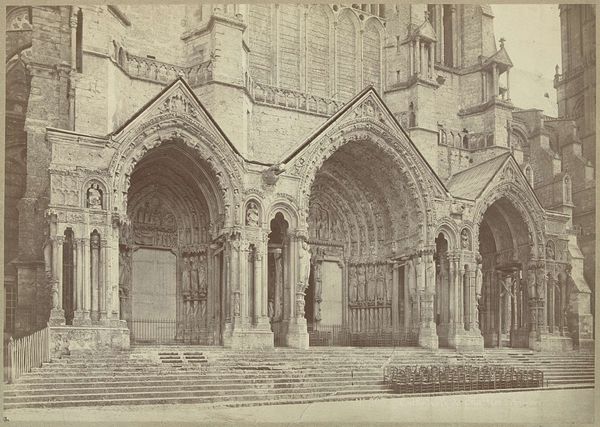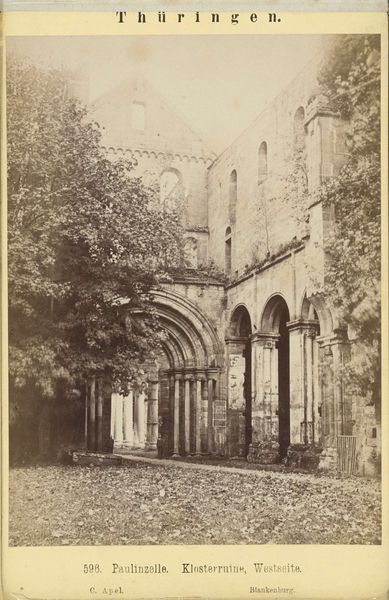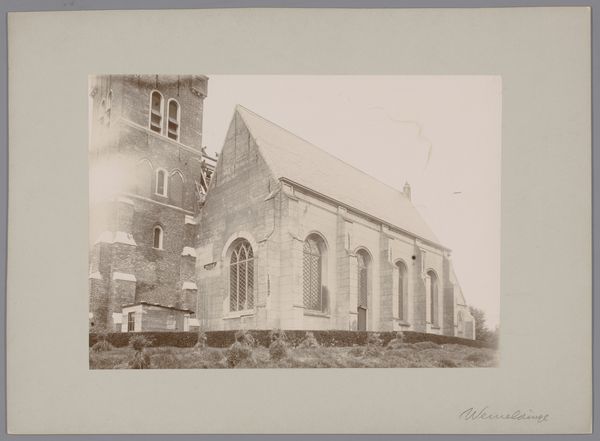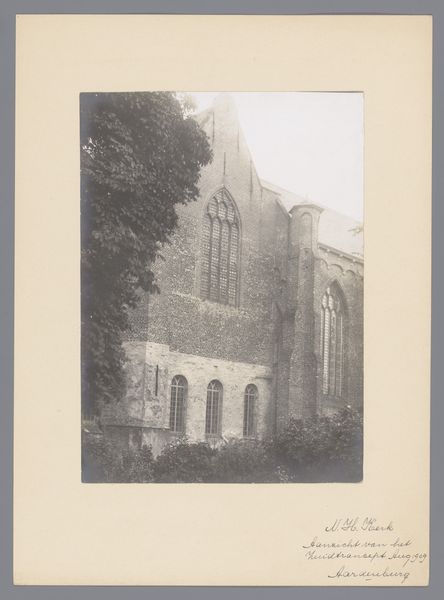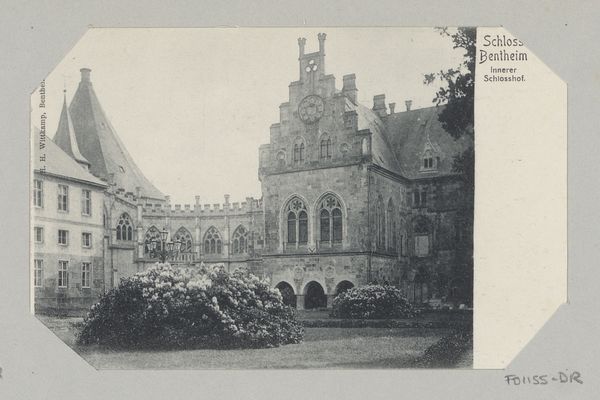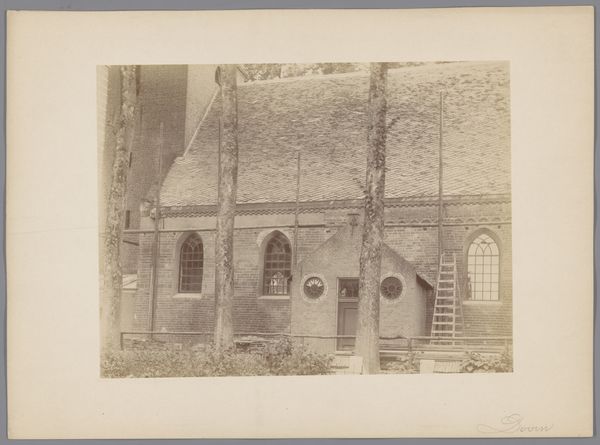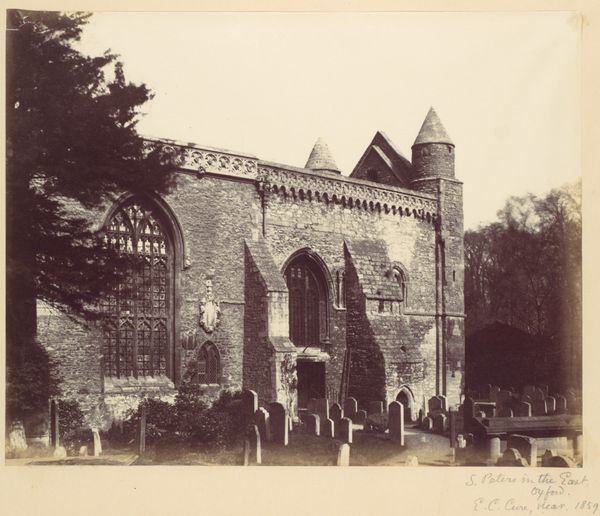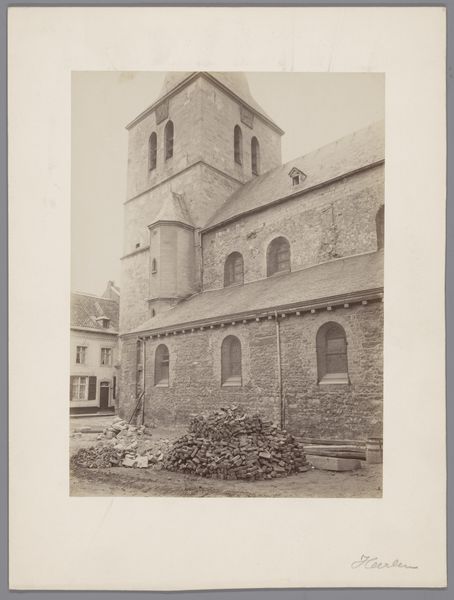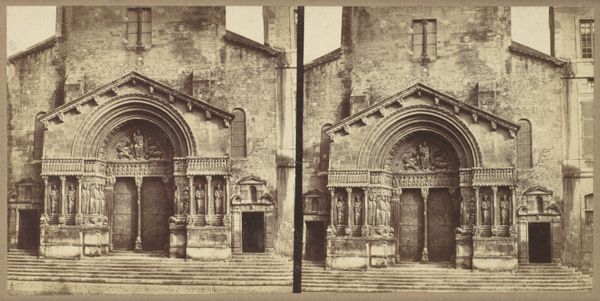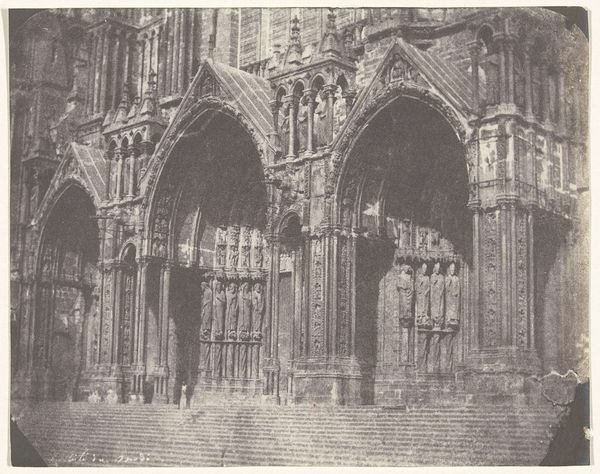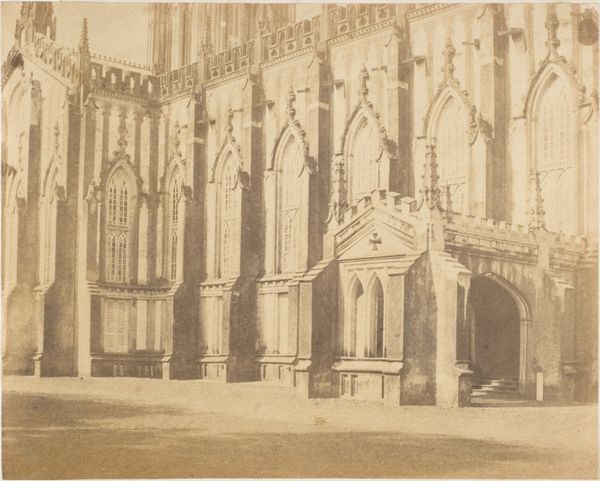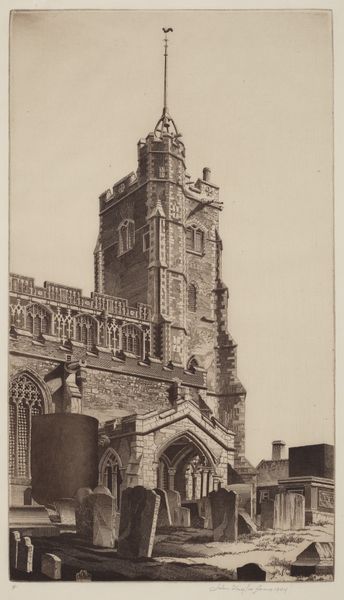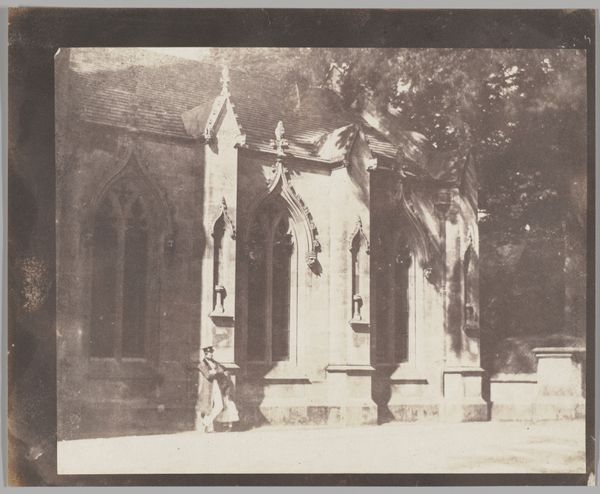
Dimensions: 29 × 38.8 cm (image); 44 × 59.6 cm (paper)
Copyright: Public Domain
Curator: Benjamin Brecknell Turner's "Southside of Cromer Church," dating to the 1850s. It’s currently held at The Art Institute of Chicago. Editor: A somber and striking piece, I must say. There’s an undeniable weight to it. The monochromatic palette lends itself to a mood that’s both reflective and melancholic, perhaps echoing the church's historical role within the community, a monument that’s weathered many a storm, seen its parishioners come and go. Curator: Indeed. Observe how the architecture is rendered with precise clarity, an exquisite demonstration of early photographic technique. The interplay of light and shadow upon the church's stone facade accentuates its volume and textural complexity. Turner skillfully employs perspective to emphasize the grandeur and imposing structure of the building. Editor: Absolutely, but I wonder what isn't captured? Who built the church? What was life like for them? Who was allowed inside, and who was relegated to its fringes? We can use such spaces to consider themes of inclusion and exclusion within society then and now. Curator: The composition creates a dialogue between the built environment and the natural landscape. Note the position of the building with the graveyard – these elements come together to suggest the interconnectedness of faith, community, and mortality. The artist shows how we interact with structures, signs, symbols... Editor: Yes, a constant dialogue between the living and the departed, marked by the silent stones that punctuate the landscape. It speaks volumes about societal norms, class structures and, quite possibly, the lived experiences of marginalized individuals who helped erect it. Curator: Turner captured a tangible slice of 19th-century England, its artistic achievement resides in its formal elegance and technical precision. Editor: Agreed, it is beautifully rendered. I also see it as a portal to a deeper understanding of ourselves, and how architecture mediates relationships between life, death, and the communities that exist, both visible and unseen, within those parameters.
Comments
No comments
Be the first to comment and join the conversation on the ultimate creative platform.
